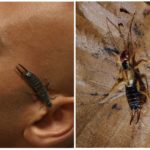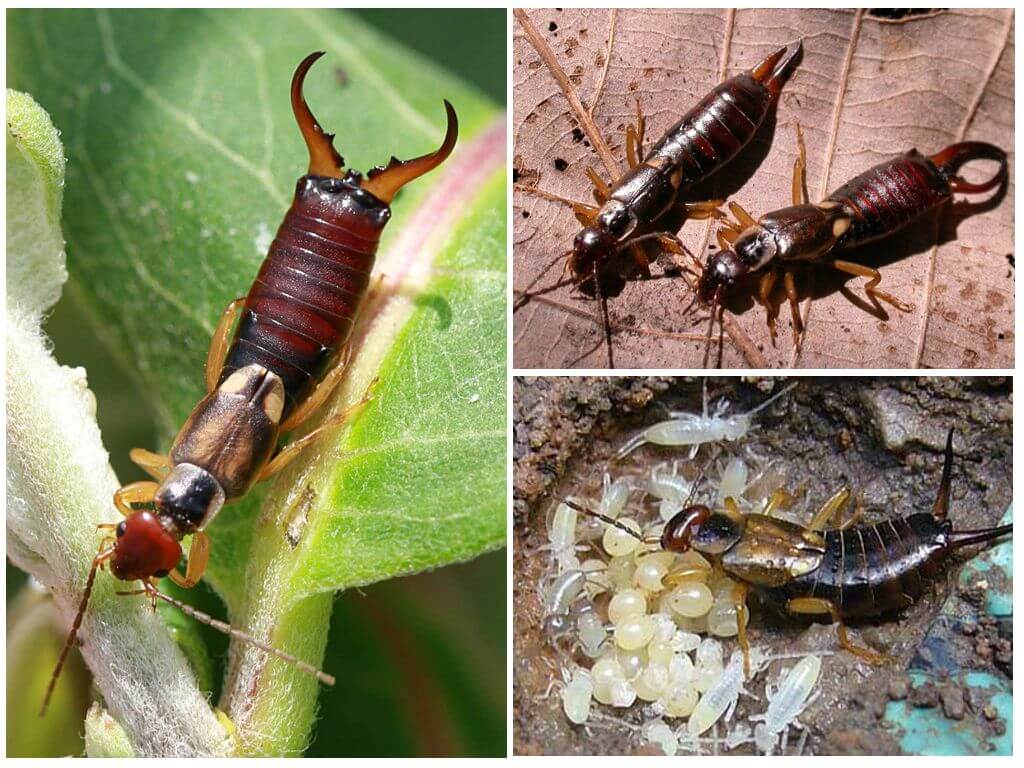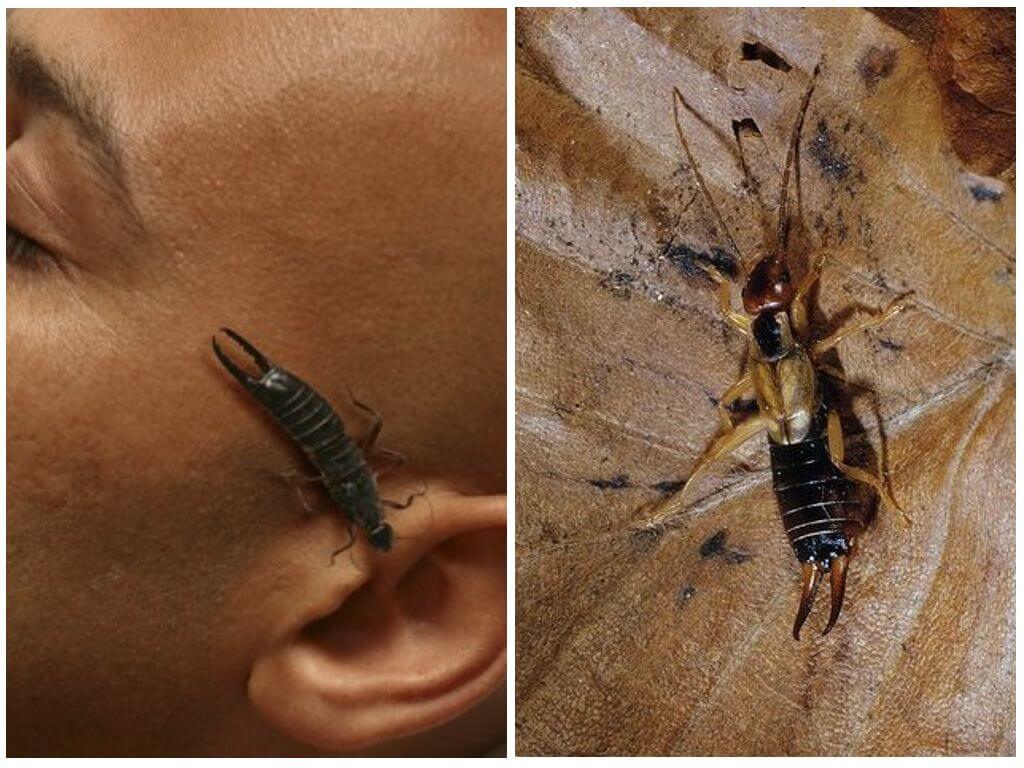What happens if the earwig (dvuhvostok) gets into the ear
- Earwig
- Earwig in the ear
Many in childhood have heard scary stories that the earwig in a person’s ear gnaws the eardrum, sneaks into the brain and lays eggs in it. The look of an insect is really awesome and is able to cast horror on impressionable persons. And the very name “earwig” makes you think about the consequences of contact with such an unusual representative of insects.
Characteristics
In everyday life earwig often called dvuhvostokoy. However, this view is erroneous in view of the fact that these are completely different insects.Their only similarity lies in a forked “tail” consisting of two pairs of cerok.
Earwig, aka pincer or a pinch, is a representative of the skin-winged squad:
- males are always larger than females and their length varies in the range of 13-17 mm, females do not grow more than 12-14 mm;
- trunk is oblong, slightly flattened chestnut color scheme;
- well-developed legs, with the help of which the insect moves quickly, dirty yellow;
- head with small closely spaced eyes adorn long filiform antennae, often their length is two-thirds of the size of the whole body;
- the end of the body is crowned with a pair of so-called ticks, which biologists call forceps, in males they are equipped with peculiar teeth, in females “claw” smooth.
The tongs perform a number of vital functions, including the retention of food objects, and protection from threatening factors. In a frightened state, the earwig arches the trunk, puts the tongs out and highlights a special secret. In this form, it is very similar to the scorpion.
Interesting!
Earwigs have two pairs of developed wings, which in the folded state are hidden under the elytra.However, they use them extremely rarely and reluctantly, preferring to run fast.
The dvuvostok, also called the coxtails, belong to the order of the six-legged, submaxillary. Their sizes do not exceed 5 mm. Although there are exotic types of body lengths up to 50 mm. The body is devoid of pigmentation and eyes. Cerci, which are mistaken for a tail, can be both very short and clawlike, which is why dvuvostok is often confused with earwigs.
Habitats of insects differ also. Dvukhvostki mainly live in the upper layers of the soil, humus, plant residues. The nippers prefer wood crevices, shelters under stones, hiding under foliage or in inflorescences.
What are dangerous insects for humans?
Having heard horror stories, many are interested in the answer to the question of what will happen if an earwig or dvuvostok gets into the ear. Immediately it is necessary to debunk the myth that the insect will not gnaw through the eardrum. The man, and especially his ear, is of no interest to him at all. Neither earwig nor dvuvostok do not belong to the blood-sicking parasites. Eggs they prefer to lay in the surface layers of the soil, after digging a tunnel and equip the nest.There was not a single case when the earwig or dvuvostok in the ear lay eggs, was not recorded.
The chances of penetration into the organs of human hearing in insects are exactly the same as those of ants or any other small representative fauna. Allowed the scenario that, while outdoor recreation, a tweezer or a tiller still accidentally crawls into a sleeping person's ear, but it cannot climb further than its limits. Therefore, the answer to the question of whether the dvuvostok can get into the ear, can be positive, but there are no special reasons for experiencing. According to statistics, cockroaches in the ear are much more often than tweezers. But if they appeared in the house, it is desirable earwigs get rid.
Interesting!
There are several hypotheses why the earwig was so named. According to one of them, it is associated with the shape of the wing, which is very similar to the shape of the ear. There is also a more incredible version associated with an old device for piercing the ear lobes, which looks like earwigs.
Earwig in the ear
What to do if the earwig crawled into your ear:
- Do not give in to panic.
- Seek help from a medical facility, where the ENT will gently wash the aggressor with water and remove it.
- If there is no such possibility, drip any vegetable oil in the ear and get the offender through a cotton swab.
Despite their formidable appearance, earwigs can be beneficial. They eat small garden and garden pests, including aphid, butterfly larvae, spider mites. Malicious activity is damage to crops and flower plants.









